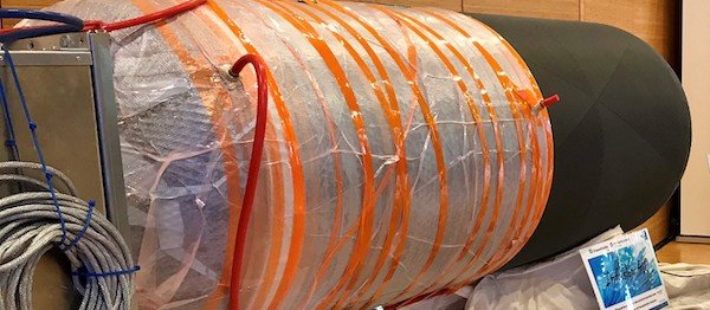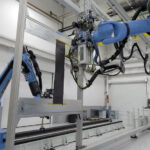The Fraunhofer Institute for Structural Durability and System Reliability LBF has spearheaded a new project focusing on the efficiency of fibre-optic sensors in monitoring the vacuum infusion process during the production of large composite components.
The project Infusion 4.0
Infusion 4.0, a project funded by the German Federal Ministry of Economics and Energy, will be run by Fraunhofer and its partner MT Aerospace AG. Using carbon fibre reinforced plastic (CFRP) booster housings, MT manufactures large CRFP components using vacuum infusion processes. In vacuum infusion, a dry-wrapped pre-form is inserted in a vacuum bag and is infiltrated with resin while slowly rotating in an oven. According to the companies, intelligent sensors are required in order to monitor the flow front of the in-flowing resin and to improve processes. Fraunhofer LBF researchers are now embedding fibre-optic sensors into the component as early as the winding process in various three-dimensional positions. These then control resin distribution during this production step.
Fibre-optic sensors
According to Fraunhofer, at the line when the resin first gets in contact with the dry fibres, the signals are transmitted from the rotating part in the oven to an outside computer in situ in order to digitally monitor the process. A digital representation of the sensor position on the component can show when the flow front reaches the sensor.
“We are receiving transparent information for the manufacturing process of these thick-walled parts for this first time,” said Martin Lehmann, research associate at Fraunhofer LBF. “This increases process reliability for vacuum infusion processes.”
Advantages of the new manufacturing process
According to Lehmann, the new manufacturing process can increase process stability, while the information gained by resin flow monitoring can help ensure the reproducibility and quality of the new product, enabling intervention if required during production.
Source: Fraunhofer and Materials Today












